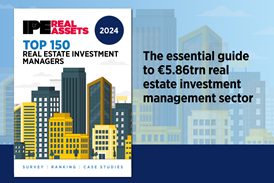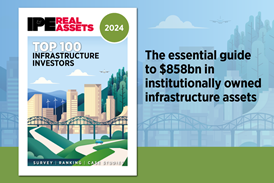In November, a staggering $1.7 tln (€1.6 tln) was wiped off the value of global government bonds, as measured by the Bloomberg Barclays Global Aggregate bond index, the sharpest losses since the index was established more than a quarter of a century ago, writes Nicholas Spiro.

For anyone who doubted whether political developments can have a strong bearing on the state of financial markets, the sharp sell-off in global bonds following the stunning victory of Donald Trump in the US presidential election is a salutary reminder of the dangers of complacency.
The double whammy of Britain’s surprise vote to leave the European Union (EU) and Trump’s upset win – two massive political shocks in the western democratic world in the space of just four-and-a-half months – has convulsed financial markets as the once unthinkable has become reality. For Europe’s property investors, the ‘wall of worry’ has now become a lot steeper to climb.
The combination of a further escalation in political risk in 2017 – the focal point of investor anxiety is shifting to the eurozone as the threat of a ‘Trumpian surprise’ in crucial elections in the Netherlands and France weighs on sentiment following a ‘No’ vote in Italy’s constitutional referendum on December 4 which forced premier Matteo Renzi to resign – and increasing ‘monetary exhaustion’ as the quantitative easing (QE) programme of the European Central Bank (ECB) nears its end makes for a much more challenging and volatile real estate investment landscape.
From a funding standpoint, the crucial question is whether the recent sell-off in global debt markets – speculation is rife that president-elect Trump will unveil a hefty fiscal stimulus package that will fuel inflation, leading to more aggressive hikes in US interest rates – signals the end of a long period of ultra-low borrowing costs and the beginning of a secular, or long-term, bear market for bonds.
While there is an unusual polarisation of views on where US interest rates are heading, the most noteworthy development in Europe’s financial markets since Trump’s victory is the persisting divergence in global monetary policies. At the beginning of December, the gap between the yield on 10-year US Treasury bonds and its German equivalent stood at its highest level since 1989, just prior to German reunification, according to Bloomberg. This means that the most important factor underpinning demand for higher-yielding European property over the past several years – the low (and in some cases negative) interest rate environment stemming from the ultra-accommodative policies of the ECB – remains in place, at least for the time being.
However, this also means that there is now an even bigger risk that the gap between sentiment and underlying fundamentals in many markets (which was already widening dangerously before Brexit and Trump’s victory) increases further if investors and developers take the resilience of Europe’s property investment markets for granted.
While a return of the acute phase of the eurozone crisis in 2011/12 is unlikely in 2017, European real estate is unquestionably on shakier ground. The pressure points are clear and need to be carefully assessed. The most important ones, in our view, are:
Disorderly Brexit: It is still early days as far as Brexit is concerned. The issue is not whether there will be a ‘hard’ or ‘soft’ Brexit, but how disorderly Britain’s withdrawal from the EU will prove to be. While a further drop in sterling may tempt more foreign buyers, uncertainty – which will intensify as negotiations get under way – costs as the 26% quarterly fall in UK commercial property transaction volumes in the third quarter of 2016 attests.
Eurozone break-up risk: The triggers for renewed anxiety about the singleness of the eurozone are slowly resurfacing. French and Italian political risks are a focal point of concern for financial markets. Opportunistic investors may benefit and yields on prime assets may compress further, but Europe’s shaky monetary union will face a more severe test in 2017. Italy’s creaking banking sector will come under even heavier scrutiny.
Test for Spain: A litmus test of sentiment towards the eurozone will be whether Spain – the biggest beneficiary of renewed interest in southern Europe – retains its appeal. Increasing foreign demand for once-shunned residential assets will be a key gauge of sentiment.
Nicholas Spiro is a partner at Lauressa Advisory in London









